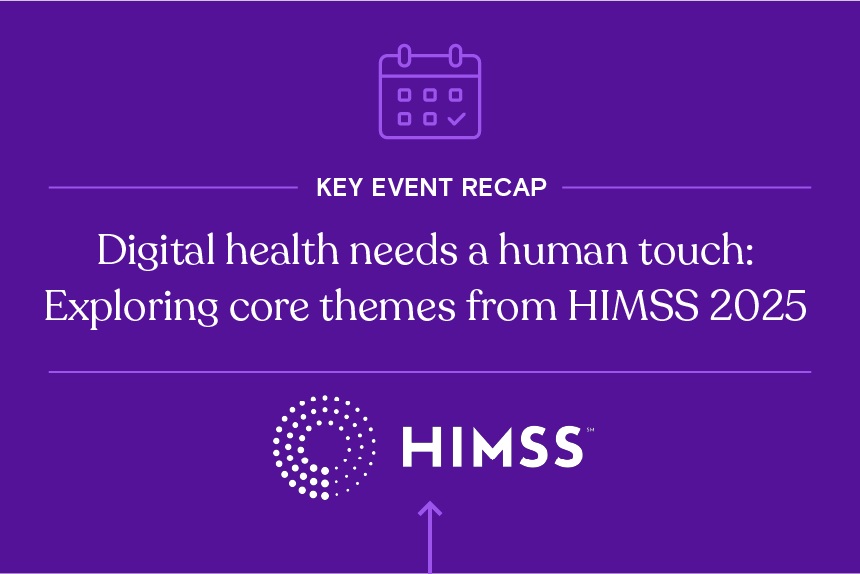Outpatient care refers to medical procedures and services that don’t require an overnight stay; ambulatory surgery centers (ASCs), urgent care centers, retail or walk-in clinics, primary care clinics, and imaging centers are all examples of outpatient facilities. According to Deloitte, the outpatient market is expected to grow at a significant rate of over 6 percent annually between 2016 and 2026.
So, what will be the upcoming elements enabling and influencing growth in the outpatient care market in 2020?
In September 2019, Definitive Healthcare polled healthcare leaders across the provider, BioTech, financial services, staffing, life sciences, IT, and consulting verticals to determine predictions for the future of the outpatient market in 2020. With 292 total responses, these healthcare leaders helped identify:
1. The tools outpatient facilities will need to succeed in the healthcare market
2. The factors that may result in the most outpatient market growth in 2020
3. The biggest outpatient care challenges in 2020
Read on to learn more about the results of Definitive Healthcare’s 2020 outpatient care trends survey:
What do outpatient facilities need to succeed in the market?
- Data & analytics capabilities: Tied for first place, 27.1%, respondents said outpatient facilities face the most pressure to reduce costs on supplies, procedures, salaries, and overtime, among other things, and boost revenue through more or diverse medical opportunities. By harnessing data and analytics platforms, they can boost efficiency and performance in these areas.
- New/improved technologies: 27.1% of respondents also identified healthcare IT (HIT) as an essential investment for outpatient centers. Outpatient centers may be slower to implement new technologies like telehealth systems for example, as noted in our 2019 Outpatient Telehealth study. This hesitation may be due to smaller budgets and uncertainty surrounding reimbursement policies from insurance companies and at the national level.
- Participating in reimbursement models (alternative payment models): Followed closely behind, 25% of respondents believe that it will be helpful for outpatient facilities to shift away from fee-for-service models and toward alternative payment models (APMs) with shared savings, shared risk, bundled payments, or population-based payments. This shift is an ongoing parallel trend, and value-based models of care are the future of healthcare.
Better staffing ratios: The United States will see a shortage of up to nearly 122,000 physicians by 2032, according to data published by the AAMC (Association of American Medical Colleges) and 7.3% of respondents see the value in investing time and money into properly staffing outpatient facilities.
Definitive Healthcare’s all-new Staffing and Recruiting Analytics dashboard, located within the DHC Visuals platform, is a tool that gives users insight into facilities that show signs of understaffing. This tool draws upon vast research and historical information to enable users to leverage key staffing metrics, current and historical staffing availability, and nurse labor data in order to draw quick insights on the staffing needs of target hospitals and health systems. It can also help staffing firms anticipate whether there will be a need for permanent or locum tenens providers and where they will be needed the most.
- Steady flow of capital: It’s no secret that money makes the world-go-round. About 6.3% of survey respondents reported that successful outpatient clinics require a strong budget to keep the facility properly staffed, as well as implement new technologies and analytics platforms.
(7.2%) ‘Other’ response examples
”Less infection.”
”Better referral bases.’”
”Strong balance sheet.”
In 2020, what factor(s) do you think will result in the most outpatient market growth?

- New technologies and techniques: rise of minimally invasive surgeries, hybrid operating rooms, telehealth, mobile health (mHealth apps), etc.: With the majority of the vote at 38.8%, respondents said that outpatient technologies like advanced imaging, virtual and remote care, telehealth, and mobile applications will be driving the most change and growth in the 2020 outpatient care market.
- Greater interoperability (EHR systems, online bill pay, self-registration, etc.): 11.3% of respondents see a need for greater interoperability; it’s common for inpatient and outpatient facilities to use disparate technologies and vendors, which makes the successful transfer or exchange data more difficult.
- Ongoing rise of consumerism (home recovery, convenience, and lower costs are appealing to patients): In second place, with 29.6% of the vote, consumerism is also a major driving factor for growth in the outpatient market. For today’s consumer, a low-cost, convenient medical experience is paramount, and the low-cost, in-and-out nature of outpatient facilities helps create a consumer-friendly experience.
- Increase in ASC Medicare reimbursement: A smaller portion of respondents, 6.1%, attribute the growth of the outpatient market to an increase in Medicare reimbursement. Since 2015, the Medicare Payment Advisory Commission (MedPAC) has suggested that CMS encourages the shift toward ASCs.
- Ongoing industry consolidation: These days, hospitals, private equities, and insurers are opting to purchase more ASCs and physician groups to meet patient demand. In Definitive Healthcare’s 2019 Healthcare Trends Survey, industry consolidation was established to be top-of-mind for healthcare professionals. This is likely to stretch into 2020, with 12.2% of respondents naming industry consolidation as a factor that will impact the growth of the outpatient market.
(2%) ‘Other’ response examples
”Combination of the above driven by pressure to drive down costs and decreasing reimbursement coverage.”
”New technologies would be a runner-up to greater interoperability.”
What do you anticipate will be the biggest outpatient care challenge in 2020?

- Staffing outpatient facilities: Organizations are struggling to attract the talent necessary to expand their ambulatory care network; 19.4% of respondents named staffing as one of 2020’s biggest outpatient care challenges.
- Implementing and investing in new technologies: The vast majority, 40.9%, of respondents identified HIT issues as the greatest outpatient challenge they are facing in 2020. Curious about which technology modules, vendors, and applications a facility is using? A software platform like Definitive Healthcare can give a 360-degree view of a hospital or clinic’s technology implementation status and RFPs, showing future plans for installations.
- Attracting new patients: 11.2% of respondents see attracting new patients as a major challenge for outpatient facilities. ASCs need constant utilization to achieve profitability, and many are turning to marketing strategies to attract patients.
- Industry consolidation, understanding M&As and new affiliations: 27.5% of respondents believe identifying and accessing key decision makers for purchasing will become increasingly challenging in 2020, particularly as the outpatient market continues to grow and merge.
(1%) ‘Other’ response examples
“Attracting Capital for expansion, acquisition, equipment, IT, etc.”
“Eliminating endless waiting.”
Learn more







